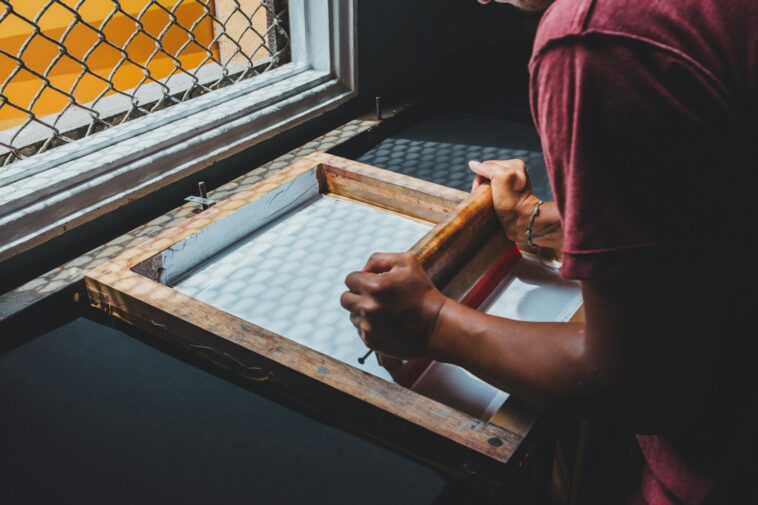If you’re thinking about starting a printing business—or upgrading how you print custom designs on shirts, mugs, or bags—you’ve probably heard about two popular methods: sublimation and DTF printing.
Both are known for creating vibrant, long-lasting prints. But they work in different ways, have different costs, and are better suited for different types of products.
I’ve seen a lot of people jump into one method just because it’s trending, only to find out later it wasn’t a good fit for what they needed.
That’s why it’s important to understand how each one works and which makes more sense for your goals, your customers, and your budget.
The last thing you want is to invest in the wrong printer or materials, especially if you’re running a small business or just getting started.
In this post, I’ll break down sublimation and DTF printing in plain language.
I’ll explain how each one works, the pros and cons of both, the types of products you can make, how much it’ll cost to get started, and what kind of results you can expect.
I’ll also include tips based on real-world use, not just theory.
What is Sublimation Printing?
Sublimation printing is a heat-based process where special ink turns into gas and fuses with a polyester surface.
It’s great for printing on white or light-colored polyester fabrics and specially coated hard goods like mugs, plates, and phone cases.
How it works:
You print your design onto special sublimation paper using sublimation ink.
You place the print on the product surface.
A heat press applies heat and pressure.
The ink becomes gas and bonds with the polyester fibers or coating.
The result? Bright, permanent prints that don’t peel or fade over time—because they’re part of the material, not just sitting on top.
Pros of Sublimation:
Produces high-quality, vibrant prints
Long-lasting and fade-resistant
No feel or texture on the surface (it becomes part of the item)
Great for all-over or edge-to-edge printing
Cons:
Only works on polyester or poly-coated materials
Doesn’t work well on cotton or dark fabrics
Requires white or light-colored backgrounds
Limited to specific product types unless coated
What is DTF (Direct-to-Film) Printing?
DTF printing is a newer method where you print a design onto a special film, apply powder adhesive, and then press it onto the fabric using heat. Unlike sublimation, DTF works on cotton, polyester, blends, and even dark fabrics.
How it works:
You print your design onto a PET film using DTF ink.
You sprinkle a hot-melt powder on the print.
The powder melts and sticks to the ink during a curing process.
You transfer the print to the fabric using a heat press.
The cool part is that once you’ve printed and cured the transfer, you can store it and press it onto shirts later. That’s great for bulk orders or keeping ready-to-press designs on hand.
Pros of DTF:
Works on all fabric types—cotton, polyester, blends, dark or light
Prints are stretchable and durable
Can stockpile designs for later use
No pre-treatment needed (unlike DTG)
Cons:
Equipment and consumables can be more expensive than sublimation
Requires more steps (printing, powdering, curing, pressing)
Film and powder need proper storage and handling
May have a slightly raised texture compared to sublimation
Key Differences Between Sublimation and DTF
| Feature | Sublimation | DTF Printing |
|---|---|---|
| Fabric Type | Only polyester or poly-coated items | Works on cotton, polyester, blends |
| Color Flexibility | Best on white/light surfaces | Works on all colors, even black |
| Durability | Extremely durable, no peeling | Very durable, but may feel slightly raised |
| Feel on Fabric | No feel at all (becomes part of fabric) | Soft feel, slight texture |
| Start-up Cost | Lower | Higher |
| Required Equipment | Sublimation printer, heat press | DTF printer, powder shaker, oven, press |
| Storage of Prints | Not ideal | Can store transfers for later |
| Product Range | Limited to specific items | More flexible—fabrics, totes, etc. |
Start-Up Costs Comparison
Let’s talk money. Startup costs can make or break a decision for many small business owners.
Sublimation setup:
Sublimation printer (like Epson EcoTank with converted inks): $250–$600
Heat press: $150–$300
Sublimation paper: $20–$50
Sublimation inks: $30–$100
Blanks (shirts, mugs, etc.): varies
Total Estimate: Around $500–$1,000
DTF setup:
DTF printer: $1,000–$3,000 (entry-level models)
Heat press: $150–$300
Curing oven or heat gun: $200–$400
PET film: $30–$80
DTF powder: $20–$50
DTF inks: $100–$300
Total Estimate: Around $1,500–$3,500+
While sublimation is cheaper to start, DTF offers more flexibility once you’re up and running.
What Type of Products Can You Create?
With Sublimation:
Polyester shirts
Mugs
Tumblers
Keychains
Mousepads
Puzzle boards
Phone cases (with coating)
With DTF:
Cotton and polyester shirts
Hoodies
Tote bags
Hats (with curved press)
Aprons
Denim jackets
More flexible for fashion brands
Which One Is Right for You?
It depends on what you plan to sell and who your audience is. If you want to focus on products like mugs, polyester shirts, or soft items with no print feel, sublimation is fantastic.
It’s simple, affordable, and the print quality is outstanding—as long as you’re okay with white/light backgrounds.
But if you’re planning to offer custom t-shirts for all types of customers, especially cotton tees or darker garments, DTF is the better choice. It’s more versatile and can scale well, especially for businesses with growing orders.
FAQs
Can I do both sublimation and DTF in my business?
Yes, many print shops use both depending on the job. You can start with one and add the other later.
Is DTF better than DTG?
DTF is often more affordable, faster, and works on more fabrics. DTG still has a place but requires pre-treatment and is more sensitive to fabric types.
What about maintenance?
Sublimation printers need regular cleaning, especially if they sit unused. DTF printers also need regular maintenance, especially since the ink can clog if not used often.
Final Thoughts
Both sublimation and DTF printing can help you build a solid print-on-demand or custom product business.
They each have their strengths and weaknesses, so it really comes down to what you plan to offer, how much you’re ready to invest, and the kind of customers you’re targeting.
If you’re just starting out with a small budget and want to focus on mugs, mousepads, and polyester shirts, sublimation is a great entry point.
But if your goal is to offer custom t-shirts for everyone—no matter the fabric—then DTF might be worth the higher investment.
So, looking at what you want to create and sell…
Which one fits your business better: Sublimation or DTF printing?





GIPHY App Key not set. Please check settings